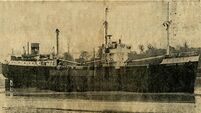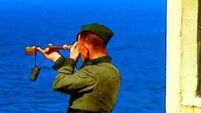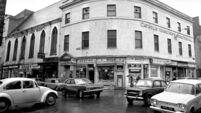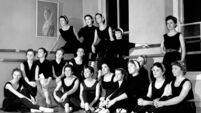Awe-inspiring: Gerald’s copper-fastened legacy lives on in Cork... just look up!

The copper turrets of The Crawford Gallery in Cork, worked on by Cork coppersmith Gerald Ryan
HOW many of us can say our work will live on and be a daily part of people’s lives for decades - perhaps centuries - after we are gone?
That is certainly the case with my father-in-law Gerald Ryan.
A renowned coppersmith, his projects included the landmark turret at the Crawford Gallery, and also the one at St Luke’s at the bottom of Summerhill North.
Further afield, Gerald’s work adorns the roof of St Nicholas’ Collegiate Church in Galway.
In fact, we once took his grandchildren on a bus tour of Galway, and the driver stopped at St Nicholas’ and told us all about the ‘man from Cork’ who did the copper roof. When we questioned him, he confirmed it was Gerald - the kids were thrilled!
That kind of far-flung fame for workmanship is not bad for a man who lived most of his life on Blarney Street in Cork’s Northside, and who had to overcome much personal tragedy.
Gerald, who died in 2001, had such hard hands from his years of hand-working copper that he could pick a burning piece of coal out of the fire!
Born on January 17, 1917, he was brought up in Ballincollig. He would talk a lot about the changes he’d lived through, such as the building of Gurranabraher and the Inniscarra dam.
He experienced great tragedy early in life. His sister Mary died of measles/pneumonia at three months old, and tragically, on the family’s return home from her funeral, her brother William also died, at just over a year old, of similar symptoms.
In the next couple of years, a sister, Winifred, and a brother, John, died of childhood diseases which at the time were fatal.
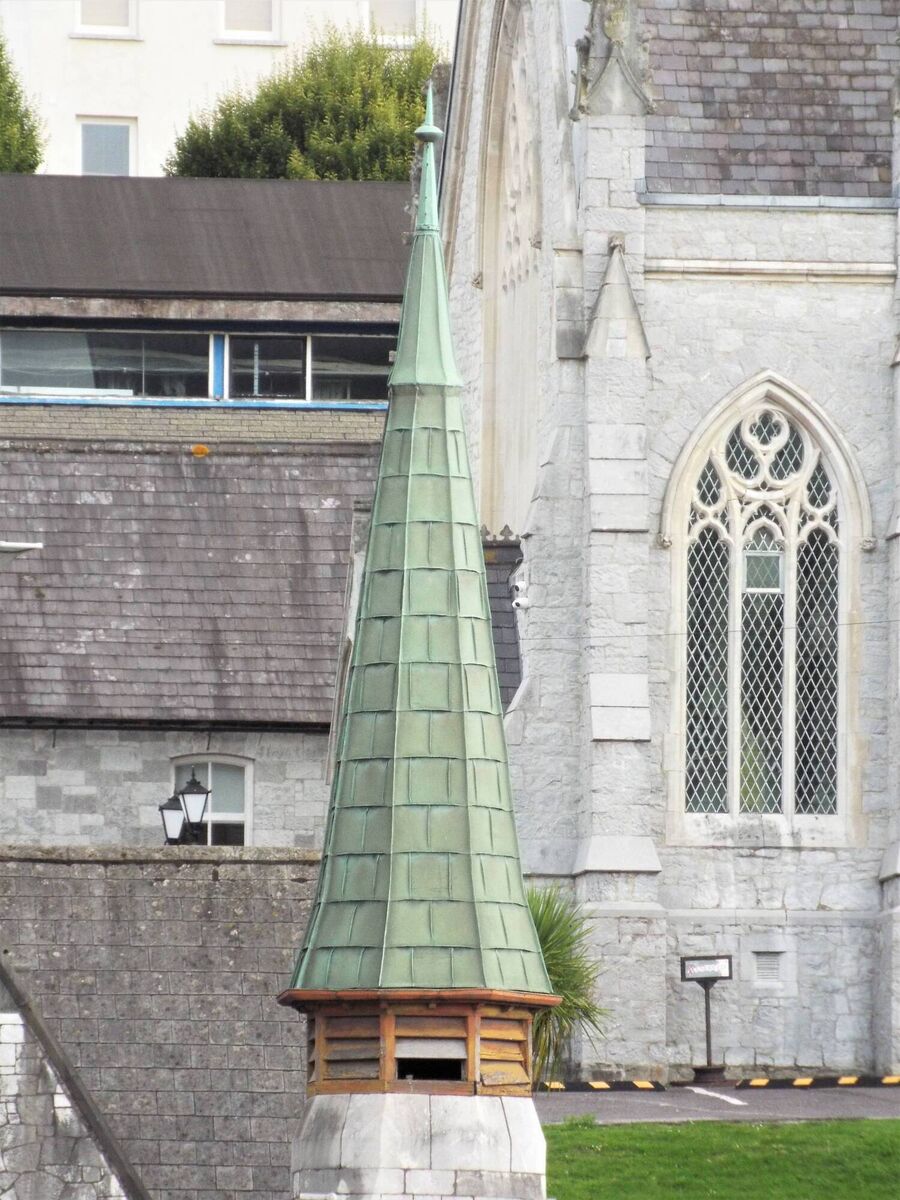
The death, many years later, of another brother, at the age of 31, was, to the Ryan family, a heartbreak on another scale.
******
I was born in 1951, and my memory of childhood illnesses is thankfully limited. I was five when the polio epidemic hit Cork, and soon understood it was a bad thing that could hurt any child.
I lived in Dunbar Street, and knew some girls at school who had to wear braces on their legs and stopped attending classes.
Our home reeked of Jeyes’ Fluid, with which my father, somewhat maniacally, cleaned, not just the lavatory in the backyard, but the yard itself.
Washing your hands, especially after a trip to the lav’, was constantly stressed. A rule, I must confess, more honoured in the breach than the observance. We couldn’t be bothered going indoors to wash our hands when we were playing.
Then there was the other sickness, the one neighbours whispered about: consumption, also known as tuberculosis, or TB.
My childish mind associated that with very thin, pale men.
If we saw someone of that description in the street, it was assumed he was either soon to go to, or was just back from The Sanitorium in Sarsfield’s Court.
Children with polio went to the Fever Hospital, St Finbarr’s on the Douglas Road, which we passed on the way to see our grandad. It was previously known as The Union, where starving people went in Famine times. In the high wall, near the big gate, there was a hatch with a wooden shutter through which relatives would pass things for the patients - cakes, sweets, comics, or letters.
Unlike the Covid pandemic, there were no yellow printed warnings on shop doors and no masks. The word lockdown was not in our vocabulary. But we all tended to stay within a kilometre or two of home anyway.
We could get our groceries, newspapers, cakes, and sweets in the variety of shops on Dunbar Street and other requirements were delivered, some by horse-and-cart. The church and shoemaker were just down the street.
There were pubs down on the Quay, and above in Douglas Street. One backed onto the Quaker cemetery, which became a handy hiding place if the gardaí were spotted on the street after closing time. Being ‘found-on’ meant a fine, and a degree of shame in the eyes of neighbours.
People did continue to go to work during the polio scare, but generally avoided trips to shops in town. Children weren’t allowed go to ‘The Pictures’.
Fresh air was second only to the Jeyes’ Fluid, as a protection against polio. Taking children for daily walks became the norm, especially up the road up by the gas works. Inhaling the fumes was believed to be good for the lungs! It was common for children with respiratory problems like asthma to be held over ‘choke holes’ in the gas works, where the fumes were concentrated.
Being stick thin, I was seen as delicate, so, along with a regime of always clearing my plate, I was given cod-liver oil by the big spoonful and raw eggs. A broken yolk was revolting so I became adept at swallowing it whole.
On the street, being delicate brought rather wary looks from neighbours, who would ask my mother, with a nod to me, ‘Is she alright’. Shockingly, one nasty woman in a corner shop did once point at me and say ‘She looks like something out of Belsen’.
The Examiner and Echo reported extensively on the 1956 polio scourge. Its possible sources were discussed ad nauseam.
My father was furious to learn that some businesses ‘in town’ had threatened to stop advertising in them as their reports were ruining business in the city.
The fact polio was affecting Cork so badly was a particular sore point. Folk on trains were known to move carriages when they heard a Cork accent.
Almost 500 children in Ireland were infected with polio that summer, 220 of them from Cork; and of the 20 nationally who died, five were Cork children.
Bishop of Cork and Ross Con Lucey organised a day of prayer in July and exhorted his flock not to panic.
There was ‘murder’ in Cork when the All-Ireland finals were put back to the end of September because of the polio risk. Cork were playing in both, but folk up the country feared the throngs of supporters would bring disease with them. Cork were beaten in both finals, sad to report.
The battle to exterminate flies was a major part of the campaign against polio. Sticky strips dangled in profusion from ceilings, curtain rails, and door frames. It became a diverting pastime, watching a fly’s efforts to escape from the sticky trap, until it lost its life in the effort.
Rolled-up newspapers were at the ready to pursue the odd fly, on a kamikaze mission, that bypassed the traps. Lurid explanations from my father, about how a fly spits onto food, then dances on it prior to eating, ensured we went after them with enthusiasm.
Debates raged about the recent arrival of pasteurised milk being responsible for the spread of the disease. There were fears of contamination from parcels sent by U.S relatives. The ‘Dagenham Yanks’ stayed in England.
That summer, school holidays continued well into September, just as well, with classes of 40-plus girls the norm.
There was no television, no smart phones, no iPad. We did have the Compendium of Games, from Santy, so we had Ludo, Snakes and Ladders, Draughts, and card-games like Snap and Beggar My Neighbour.
A polio vaccine finally arrived in 1957. The Sugar Lump was easily dispensed, augmented by the injection later. But polio’s legacy remained for many.
I heard from a friend about the day she brought home an LP of her favourite singer, Johnny McEvoy. Eager to play it, she put it on the record player, and as he started to sing Those Brown Eyes, she was startled to see her mother begin to weep in sorrow for the beautiful brown-eyed sister my friend had never seen, who died at the age of three.
The memories of people like her, and of my father-in-law Gerald’s family, are salutary tales that recent generations have had the good fortune to avoid.
